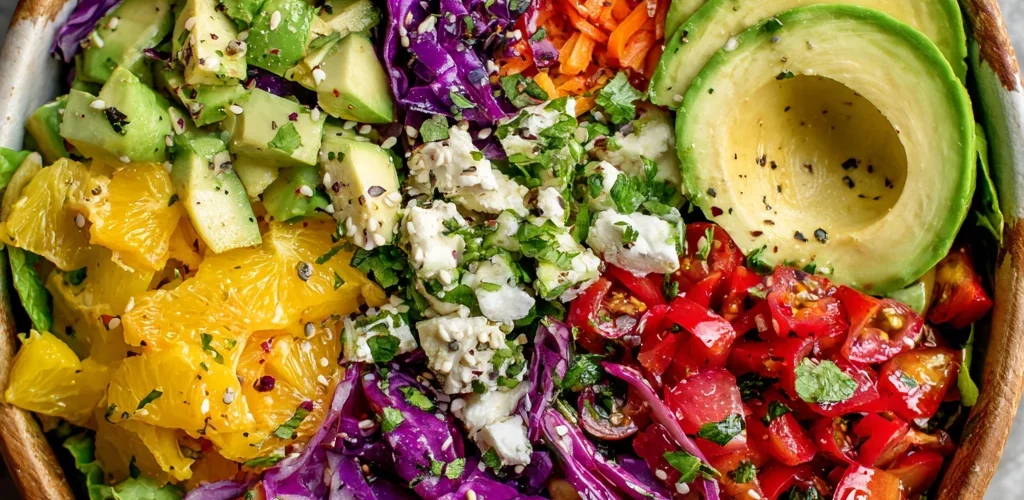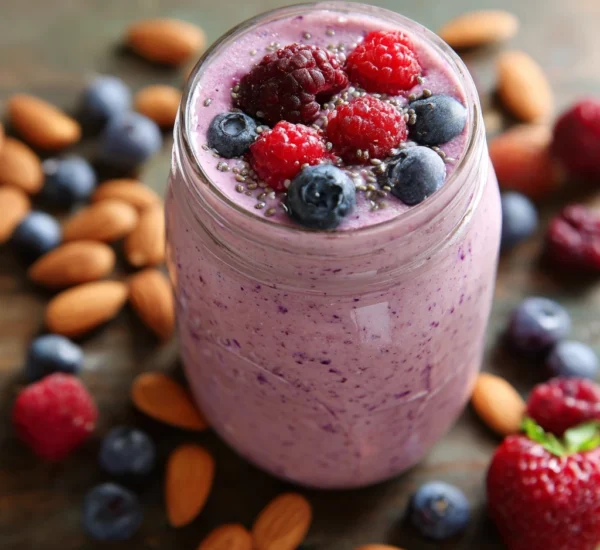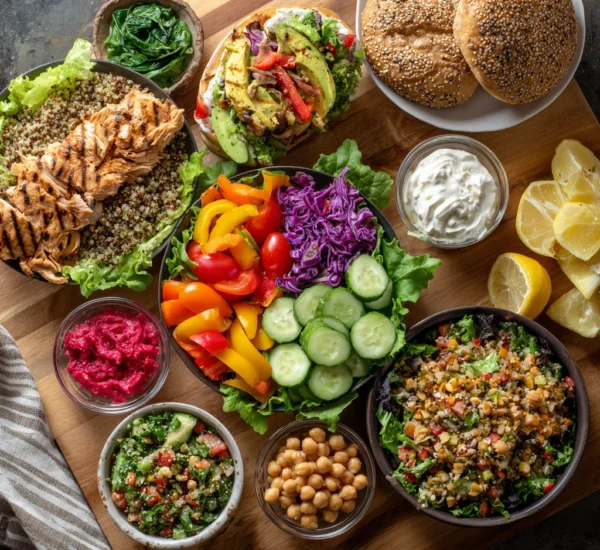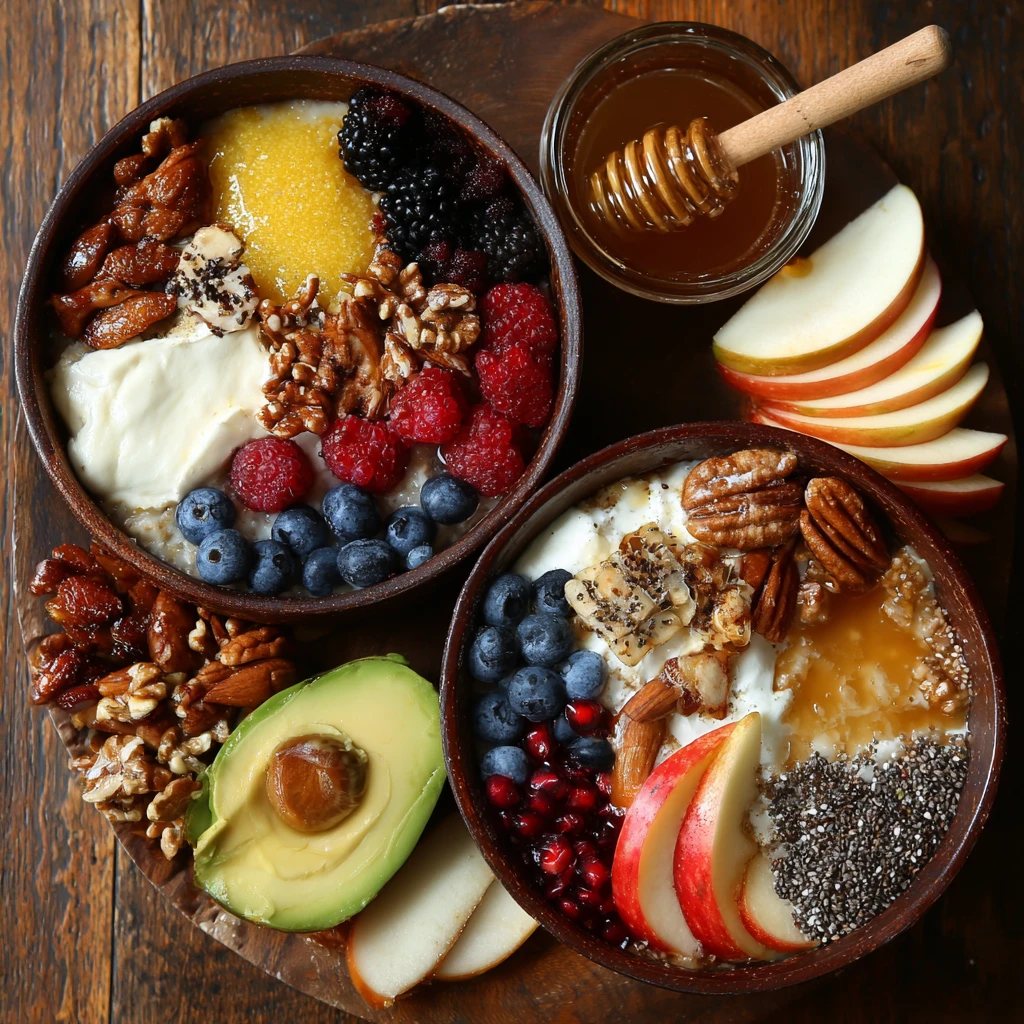Top 10 Salad Recipes Bursting with Color
Salads often get a bad rap as being boring or bland. But with the right ingredients and a little creativity, a salad can be a vibrant, flavorful, and utterly satisfying meal. This article showcases ten incredible salad recipes bursting with color, flavor, and nutrients, perfect for brightening up your lunch, dinner, or any occasion. Get ready to ditch the dull and embrace the delicious!
Section 1: The Art of Colorful Salads
What makes a salad truly stand out? It’s not just about the lettuce. The secret lies in the rainbow of ingredients you choose.
Why Color Matters
Color in food isn’t just aesthetically pleasing; it’s a visual cue to the variety of nutrients packed within. Different colored fruits and vegetables contain different vitamins, minerals, and antioxidants. For example:
- Red: Tomatoes, bell peppers, and strawberries are rich in lycopene and vitamin C.
- Orange & Yellow: Carrots, sweet potatoes, and bell peppers provide beta-carotene, which the body converts to vitamin A.
- Green: Leafy greens, broccoli, and cucumbers are excellent sources of vitamins K, C, and folate.
- Purple & Blue: Blueberries, red cabbage, and purple kale are packed with anthocyanins, powerful antioxidants that protect cells from damage.
By incorporating a diverse range of colors into your salads, you’re ensuring a wider spectrum of health benefits.
Building a Colorful Salad: A Step-by-Step Guide
Creating a visually appealing and nutritious salad is easier than you might think. Here’s a simple framework:
1. Choose Your Base: Start with a bed of leafy greens. Consider romaine lettuce, spinach, mixed greens, or kale.
2. Add Color & Texture: Incorporate a variety of colorful fruits and vegetables. Think about adding crunchy elements like chopped bell peppers, carrots, or cucumbers. Softer additions could include tomatoes, berries, or roasted beets.
3. Protein Power: Add a source of protein to make your salad more substantial. Grilled chicken, fish, tofu, beans, or chickpeas are all great options.
4. Healthy Fats: Include a source of healthy fats, such as avocado, nuts, seeds, or a drizzle of olive oil.
5. The Dressing: Choose a dressing that complements the flavors of your salad. A simple vinaigrette or a creamy yogurt-based dressing can work wonders.
6. Finishing Touches: Consider adding herbs, spices, or a sprinkle of cheese for an extra layer of flavor.
Section 2: Top 10 Colorful Salad Recipes
Here are ten delicious and visually stunning salad recipes that are sure to impress:
1. Mediterranean Quinoa Salad
This vibrant salad is packed with protein and flavor.
Ingredients: Quinoa, cucumber, tomatoes, red onion, Kalamata olives, feta cheese, parsley, lemon juice, olive oil, salt, and pepper.
Why it’s colorful: The red tomatoes, green cucumber, and purple onion create a beautiful palette.
2. Rainbow Veggie Salad with Peanut Dressing
A crunchy, colorful explosion with an irresistible peanut dressing.
Ingredients: Red cabbage, carrots, bell peppers (red, yellow, orange), edamame, cilantro, peanuts, peanut butter, soy sauce, rice vinegar, honey, ginger, and sesame oil.
Why it’s colorful: The mix of red cabbage, carrots, and bell peppers creates a true rainbow effect.
3. Strawberry Spinach Salad with Poppy Seed Dressing
A sweet and savory delight, perfect for summer.
Ingredients: Spinach, strawberries, red onion, toasted almonds, crumbled feta cheese, poppy seeds, sugar, vinegar, olive oil, and Dijon mustard.
Why it’s colorful: The bright red strawberries pop against the green spinach.
4. Caprese Salad with Balsamic Glaze
A classic Italian salad with a touch of elegance.
Ingredients: Fresh mozzarella, tomatoes, basil leaves, balsamic glaze, olive oil, salt, and pepper.
Why it’s colorful: The red tomatoes, white mozzarella, and green basil create the colors of the Italian flag.
5. Roasted Beet and Goat Cheese Salad
Earthy beets paired with creamy goat cheese.
Ingredients: Beets, goat cheese, mixed greens, walnuts, balsamic vinegar, olive oil, honey, salt, and pepper.
Why it’s colorful: The deep red beets contrast beautifully with the white goat cheese and green lettuce.
6. Mango Avocado Salad
A tropical-inspired salad that’s both refreshing and satisfying.
Ingredients: Mango, avocado, red onion, cilantro, lime juice, olive oil, salt, and pepper.
Why it’s colorful: The bright yellow mango and green avocado make a vibrant combination.
7. Black Bean and Corn Salad
A Southwestern-inspired salad with a zesty kick.
Ingredients: Black beans, corn, red bell pepper, red onion, cilantro, lime juice, olive oil, cumin, chili powder, salt, and pepper.
Why it’s colorful: The black beans, yellow corn, and red bell pepper create a visually appealing salad.
8. Grilled Peach and Arugula Salad
Sweet and smoky grilled peaches paired with peppery arugula.
Ingredients: Peaches, arugula, prosciutto, balsamic glaze, olive oil, salt, and pepper.
Why it’s colorful: The orange peaches contrast nicely with the green arugula.
9. Broccoli Salad with Cranberries and Sunflower Seeds
A crunchy and flavorful salad with a touch of sweetness.
Ingredients: Broccoli florets, red onion, dried cranberries, sunflower seeds, mayonnaise, vinegar, sugar, salt, and pepper.
Why it’s colorful: The green broccoli, red cranberries, and white onion create a festive look.
10. Asian Noodle Salad
A flavorful and refreshing salad with a hint of sesame.
Ingredients: Noodles (soba or rice noodles), shredded carrots, red cabbage, bell peppers, scallions, sesame seeds, soy sauce, rice vinegar, sesame oil, ginger, and garlic.
Why it’s colorful: The red cabbage, carrots, and bell peppers create a vibrant Asian-inspired salad.
Section 3: Dressings that Enhance the Color
The dressing is the final touch that brings all the flavors together. But it can also contribute to the overall color palette of your salad. Here are a few dressing ideas to consider:
Vinaigrettes: Bright and Tangy
Vinaigrettes are a classic choice for salads. They’re easy to make and can be customized to suit your taste.
- Lemon Vinaigrette: A simple vinaigrette made with lemon juice, olive oil, Dijon mustard, and a touch of honey. This dressing is perfect for green salads or salads with fruit.
- Balsamic Vinaigrette: A richer vinaigrette made with balsamic vinegar, olive oil, Dijon mustard, and honey. This dressing pairs well with roasted vegetables or salads with cheese.
- Raspberry Vinaigrette: A sweet and tangy vinaigrette made with raspberry vinegar, olive oil, honey, and a pinch of salt. This dressing is delicious on salads with berries or nuts.
Creamy Dressings: Rich and Decadent
Creamy dressings add a touch of indulgence to your salad.
- Ranch Dressing: A classic creamy dressing made with mayonnaise, buttermilk, herbs, and spices. This dressing is a crowd-pleaser and pairs well with a variety of salads.
- Blue Cheese Dressing: A bold and flavorful dressing made with blue cheese, mayonnaise, sour cream, and vinegar. This dressing is perfect for salads with bacon or pears.
- Avocado Ranch Dressing: A healthier and more vibrant take on ranch dressing made with avocado, Greek yogurt, lime juice, and herbs.
Adding Color Through Your Dressing
Don’t underestimate the power of your dressing to add color!
- Use red wine vinegar or raspberry vinegar for a pink hue.
- Add a pinch of turmeric for a yellow tint.
- Incorporate herbs like parsley, cilantro, or basil for a green boost.
- Blend in roasted red peppers for a vibrant orange color.
Section 4: Tips for Salad Success
Making a great salad is more than just throwing ingredients together. Here are a few tips to help you create the perfect salad every time:
Ingredient Preparation
- Wash and dry your greens thoroughly: This will prevent your salad from becoming soggy. Use a salad spinner for best results.
- Chop your vegetables into bite-sized pieces: This will make them easier to eat and will ensure that you get a variety of flavors in every bite.
- Roast vegetables for added flavor: Roasting brings out the natural sweetness of vegetables and adds a smoky flavor to your salad.
- Cook grains ahead of time: If you're adding grains to your salad, cook them in advance and let them cool completely before adding them to the salad.
Assembling Your Salad
- Start with the base: Place your greens in a large bowl or on a platter.
- Add the heavier ingredients: Place the heavier ingredients, such as roasted vegetables or cooked grains, on top of the greens.
- Add the lighter ingredients: Add the lighter ingredients, such as fruit or nuts, on top of the heavier ingredients.
- Dress the salad just before serving: This will prevent the greens from wilting and the salad from becoming soggy.
- Toss gently to combine: Toss the salad gently to combine the ingredients and distribute the dressing evenly.
Making Ahead and Storage
- Prepare ingredients in advance: You can wash and chop your vegetables, cook your grains, and make your dressing ahead of time. Store each ingredient separately in the refrigerator until you're ready to assemble the salad.
- Store dressed salads carefully: If you need to dress your salad ahead of time, use a light hand with the dressing and store the salad in the refrigerator in an airtight container.
- Add crunchy toppings just before serving: If you're adding crunchy toppings, such as nuts or croutons, add them just before serving to prevent them from becoming soggy.
Section 5: FAQs About Colorful Salads
Here are some frequently asked questions about creating colorful and delicious salads:
Can I use frozen vegetables in my salads?
While fresh vegetables are generally preferred for their texture and flavor, frozen vegetables can be a convenient option, especially during the off-season. Just be sure to thaw them completely and pat them dry before adding them to your salad to prevent a watery consistency.
How do I keep my salad from getting soggy?
The key to preventing a soggy salad is to make sure your greens are thoroughly dry and to dress the salad just before serving. You can also store the dressing separately and add it to the salad right before you eat it.
What are some good protein sources for salads?
There are many different protein sources that you can add to your salads, including grilled chicken, fish, tofu, beans, chickpeas, hard-boiled eggs, and nuts. Choose a protein source that you enjoy and that complements the other flavors in your salad.
How can I make my salad more filling?
To make your salad more filling, add a good source of protein, healthy fats, and complex carbohydrates. You can also add ingredients like avocado, nuts, seeds, quinoa, or beans.
What are some healthy salad dressing options?
Many store-bought salad dressings are high in calories, fat, and sugar. To make a healthier salad dressing, try making your own vinaigrette or creamy dressing at home. You can also use lighter options like lemon juice, olive oil, or balsamic vinegar.
How can I add more flavor to my salad?
There are many ways to add more flavor to your salad. Try adding herbs, spices, citrus zest, or roasted vegetables. You can also experiment with different types of dressings and toppings.
Can I make a salad ahead of time?
Yes, you can prepare many salad components ahead of time. Wash and chop your vegetables, cook your grains, and make your dressing in advance. Store each ingredient separately in the refrigerator until you’re ready to assemble the salad. Assemble the salad just before serving to prevent it from becoming soggy.
What are the best greens to use in a salad?
The best greens to use in a salad depends on your personal preference. Some popular options include romaine lettuce, spinach, mixed greens, kale, and arugula.
How do I roast vegetables for a salad?
To roast vegetables for a salad, preheat your oven to 400 degrees F (200 degrees C). Toss the vegetables with olive oil, salt, and pepper. Spread the vegetables in a single layer on a baking sheet and roast for 20-30 minutes, or until they are tender and slightly browned.
What are some good toppings for a salad?
There are endless possibilities when it comes to salad toppings. Some popular options include nuts, seeds, dried fruit, croutons, cheese, and herbs. Choose toppings that you enjoy and that complement the other flavors in your salad.



